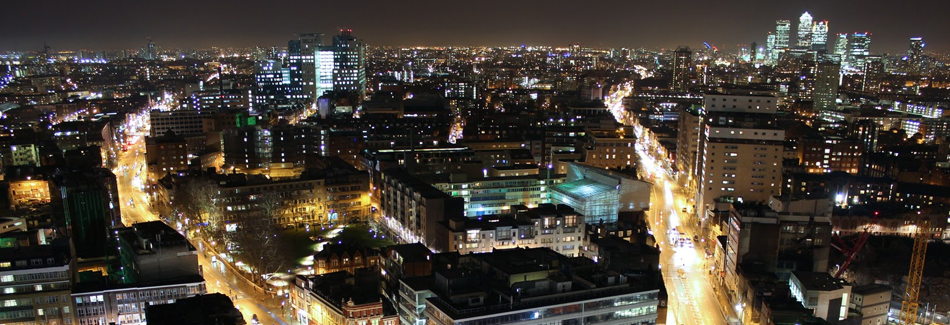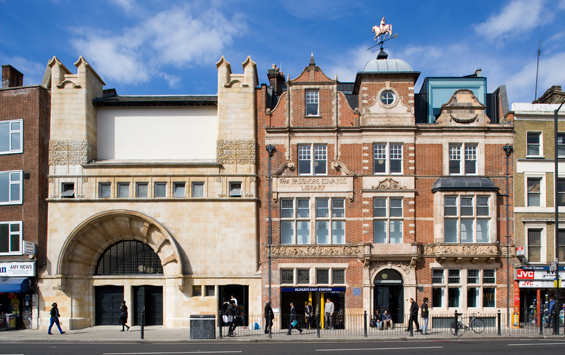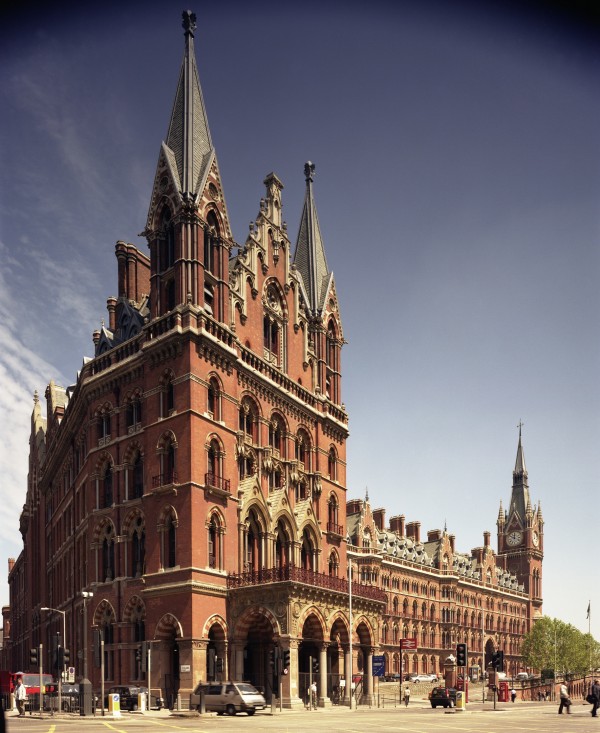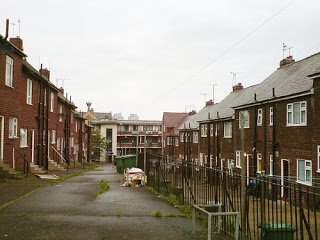474: British property investors - insights from socio-economic trend analysis
06-06-2013

Socio-Economic Trends: Property investors have to keep a close eye on trends, prior to making investment decisions. Its very important to put hard earned cash in the right area to capture long term higher and safer returns. We thought it would be helpful to you our website visitor to take a fairly high level view of aspects currently trending positively and negatively in the UK, that can affect the outcome of property prices, rental prices and returns for a property investor. This applies to both residential and commercial property investment, though we will focus on residential investment in this Special Report.
Analysis: If we analyse all the socio-economic factors that are trending positively - do some research into this - this should give us good pointers to where property prices will rise in future years. If we can identify a small area of the UK that will benefit most from these trends, our returns should be high and investment safer. 
Below is a list of factors trending negatively hence we should avoid these areas.
Trending Negatively
-
Global warming
-
Heavy oil sands
-
Northern towns and cities
-
Public sector employment
-
European integration
-
Higher taxes
-
Babyboomers sitting on property equity
-
Rural living
-
Retail shopping
-
Declining and aging rural population
-
Living in high crime areas
Avoid: A good examples of an opportunity to avoid is buying a retail shop in a small rural town in the north of England when one considers these trends. Now lets look at some positive trends enclosed below:
Trending Positively
London
Cornwall
Cycling
Prestigious educational establishments
Private sector employment
Leaving European Union
Lower taxes
London infra-structure upgrades and projects
Smart young trendy professionals in private business
Property price rise expectations
Buy to let
City centre trendy urban living
Internet shopping
Pop-up premises
Booming London population
Reducing crime levels in London
Central areas with low air and noise pollution levels
Selection of Area: The trick is to think of an investment area that would capture all these trends. We will pick out two examples of areas that stacks up high against all these criteria Whitechapel in East London, and Kings Cross-Bloombury in North London and describe why this is.
Whitechapel London : This area is close the Hi-Tech City (Silicon Roundabout) to the NNW and will have a new Crossrail train station shortly. There are quiet streets with some Victorian properties in streets with reducing crime levels, increasing population, a young vibrant professional population ma ny of whom work in The City, Canary Wharf and West End. Exposure to retail is low. Exposure to public sector jobs is low. Exposure to private sector jobs is high. There are a number of pop-up premises that are using old disused retail premises. The area is not on any main flight path so airplane noise is low. Communications to The City, West End and Canary Wharf are excellent. More young highly educated professional high-tech entrepreneurs are moving in. The area is well removed from the problems of the European Union, whether the UK stays in or not. Lots of internet businesses are making money from retail internet, rather than losing money from retail shops. A new Crossrail station is planned that should dramatically improve access to the City, West End and Heathrow. The positive economic benefits of the Olympics are still continuing as regeneration continues the area to the east at Stratford got a huge boost in 2012. Central city urban living can be access at reasonable cost in Whitechapel. The area is only ½ mile east of The City fringe, 3 miles east of The West End and 1½ miles WNW of Canary Wharf. New businesses are starting all the time. More foreign investment is taking place in this area. Crime levels are dropping. This is the sort of area one could image new 3D Printing and Nanotechnology companies starting up in lower cost commercial premises. Its a handy area for inter-city cycling one can access all central areas within a 30 min cycle ride. The area could benefit from technology in the future as key technology networks develop and cluster in centres of excellence like Tech City drawing in the best from around the world into this international hi-tech global hub. As taxes drop for new businesses and the government and Boris Johnson give further support this could be a boom area for the UK. All these aspects lead one to believe the 5-10 year outlook for property prices and rental prices is strong and this area should out-perform the average UK and London area.
ny of whom work in The City, Canary Wharf and West End. Exposure to retail is low. Exposure to public sector jobs is low. Exposure to private sector jobs is high. There are a number of pop-up premises that are using old disused retail premises. The area is not on any main flight path so airplane noise is low. Communications to The City, West End and Canary Wharf are excellent. More young highly educated professional high-tech entrepreneurs are moving in. The area is well removed from the problems of the European Union, whether the UK stays in or not. Lots of internet businesses are making money from retail internet, rather than losing money from retail shops. A new Crossrail station is planned that should dramatically improve access to the City, West End and Heathrow. The positive economic benefits of the Olympics are still continuing as regeneration continues the area to the east at Stratford got a huge boost in 2012. Central city urban living can be access at reasonable cost in Whitechapel. The area is only ½ mile east of The City fringe, 3 miles east of The West End and 1½ miles WNW of Canary Wharf. New businesses are starting all the time. More foreign investment is taking place in this area. Crime levels are dropping. This is the sort of area one could image new 3D Printing and Nanotechnology companies starting up in lower cost commercial premises. Its a handy area for inter-city cycling one can access all central areas within a 30 min cycle ride. The area could benefit from technology in the future as key technology networks develop and cluster in centres of excellence like Tech City drawing in the best from around the world into this international hi-tech global hub. As taxes drop for new businesses and the government and Boris Johnson give further support this could be a boom area for the UK. All these aspects lead one to believe the 5-10 year outlook for property prices and rental prices is strong and this area should out-perform the average UK and London area.
Kings Cross-Bloomsbury London : This area is still benefiting from the fairly new Eurostar station with excellent rail and tube communications in all directions. It is 1 mile NE of West End, ½ mile NE of trendy Soho, Ύ mile west of Hi-Tech City (Silicon Roundabout) and Crossrail will come through just south at Tottenham Court Road creating a further boost. A new £650 million medical research cent re will be built at Kings Cross. There are quiet streets with some Victorian properties with reducing crime levels, increasing population, a young vibrant professional population - many of whom work in The City, Midtown and the West End. Exposure to retail is low. Exposure to public sector jobs is low. Exposure to private sector jobs is high. There are a number of pop-up premises to the north that are using old retail and commercial premises. The area is not on any flight path so plane noise is low. Communications to City, West End and Canary Wharf are excellent. Rail links to Paris, Cambridge and the north are excellent. More young educated professional high-tech entrepreneurs are moving in many from Cambridge. The area is well removed from the problems of the European Union, whether we stay in or not. Lots of internet businesses are making money from retail internet, rather than losing money from retail shops. Central city urban living can be access at reasonable cost close to Kings Cross. The area is only ½ mile NW of The City fringe and 3 miles NW of Canary Wharf. New businesses are starting all the time. More foreign investment is taking place in this area. Crime levels are dropping. Kings Cross used to be famed for its seedy red light district this area is being transformed. Its a handy area for inter-city cycling one can access all central areas within a 20 min cycle ride. As wealthy foreigners move in they will take advantage of the excellent Theatre, Restaurants, Shops and leisure-tourism on the door-step in Soho and Shaftsbury Avenue plus the West End. As taxes drop for new businesses and the government and Boris Johnson give further support this could be a boom area for the UK. All these aspects lead one to believe the 5-10 year outlook for property prices and rental prices is strong and this area should out-perform the average UK and London area.
re will be built at Kings Cross. There are quiet streets with some Victorian properties with reducing crime levels, increasing population, a young vibrant professional population - many of whom work in The City, Midtown and the West End. Exposure to retail is low. Exposure to public sector jobs is low. Exposure to private sector jobs is high. There are a number of pop-up premises to the north that are using old retail and commercial premises. The area is not on any flight path so plane noise is low. Communications to City, West End and Canary Wharf are excellent. Rail links to Paris, Cambridge and the north are excellent. More young educated professional high-tech entrepreneurs are moving in many from Cambridge. The area is well removed from the problems of the European Union, whether we stay in or not. Lots of internet businesses are making money from retail internet, rather than losing money from retail shops. Central city urban living can be access at reasonable cost close to Kings Cross. The area is only ½ mile NW of The City fringe and 3 miles NW of Canary Wharf. New businesses are starting all the time. More foreign investment is taking place in this area. Crime levels are dropping. Kings Cross used to be famed for its seedy red light district this area is being transformed. Its a handy area for inter-city cycling one can access all central areas within a 20 min cycle ride. As wealthy foreigners move in they will take advantage of the excellent Theatre, Restaurants, Shops and leisure-tourism on the door-step in Soho and Shaftsbury Avenue plus the West End. As taxes drop for new businesses and the government and Boris Johnson give further support this could be a boom area for the UK. All these aspects lead one to believe the 5-10 year outlook for property prices and rental prices is strong and this area should out-perform the average UK and London area.
Middlesboro: Now lets compare these two positively trending areas, to a town like Middlesbrough in NE England. This towns private sector industry was closing down up to 1997 and high unemployment was a result. During the Labour years of 1997 to 2009 the city saw improvements from new public sector jobs and regeneration funding during the growth years much funded from borrowing. House prices rose sharply. However, since the financial crisis in 2008 i ndustry has continued its decline and public sector jobs losses have accelerated. Regeneration funding has dried up. People have tried to move away to escape the depression and find work. Many homes are boarded up and property prices have crashed. Depopulation is a problem along with an aging population. Crime levels have dropped though this is true in most areas in the UK in the last few years. Retail shops have closed down. Very few high-tech industries have started up. There are few young educated professionals moving in and an absence of foreign investment from wealthy individuals. The chemical industry is in decline and the local oil refining is polluting and in decline. The area started trending negatively in 2008 and there seems no end in sight. Middlesbrough now has the second highest unemployment rate in the country after Nottingham at 14.4%. For these reasons, despite low property prices, it does not seem an area to establish good safe high investment returns. Regrettably an investment area to be avoided.
ndustry has continued its decline and public sector jobs losses have accelerated. Regeneration funding has dried up. People have tried to move away to escape the depression and find work. Many homes are boarded up and property prices have crashed. Depopulation is a problem along with an aging population. Crime levels have dropped though this is true in most areas in the UK in the last few years. Retail shops have closed down. Very few high-tech industries have started up. There are few young educated professionals moving in and an absence of foreign investment from wealthy individuals. The chemical industry is in decline and the local oil refining is polluting and in decline. The area started trending negatively in 2008 and there seems no end in sight. Middlesbrough now has the second highest unemployment rate in the country after Nottingham at 14.4%. For these reasons, despite low property prices, it does not seem an area to establish good safe high investment returns. Regrettably an investment area to be avoided.
Fastest Growing Areas: Its also worth bearing in mind that in the UK areas that have the fastest growing populations and minimal home building with most dynamic private sector a nd smallest proportional public sectors will do best in the next ten years. Because manufacturing has been in decline in the UK since the 1950s as a proportion of the GDP this trend is likely to also continue. It will only be hi-tech industries that will be able to compete globally using intellectual property, innovation and highly skilled entrepreneurial workforces all things that London benefits from.
nd smallest proportional public sectors will do best in the next ten years. Because manufacturing has been in decline in the UK since the 1950s as a proportion of the GDP this trend is likely to also continue. It will only be hi-tech industries that will be able to compete globally using intellectual property, innovation and highly skilled entrepreneurial workforces all things that London benefits from.
Follow The Wave: Its really best to go with these trends rather than fight them. So despite the very low property prices in the north and sometimes higher rental yields we still think for the longer run London offers the best investment opportunities. Other cities like Cambridge, Oxford, Southampton, Bristol, Manchester and Leeds also have attractions but the rate of business growth is likely to be far higher in London over the next ten year and with it severe supply side tightening with very strong demand for property rentals and purchases.
We hope this Special Report has helped you frame your investment decisions and given some good pointers to help you improve your returns. If you have any comments or queries, please contact us on enquiries@propertyinvesting.net

